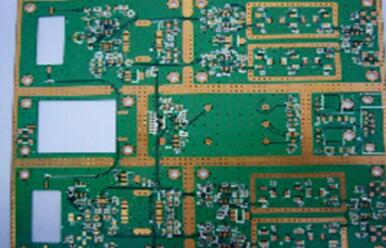As the volume of electronic products becomes smaller and smaller, the volume of printed circuit boards(PCBs) is also constantly shrinking, and circuit designs are becoming more and more dense. As the power density of the components increases, the heat dissipation of the PCB is too large, which affects the service life, aging and even failure of the components. Before a well-known mobile phone battery explosion incident made designers and manufacturers more vigilant, a certain amount of space must be reserved inside the mobile phone, and the heat dissipation of the wireless charging coil should also be taken into account in the heat dissipation of the mobile phone. This incident once again proved the urgency of thermal management of electronic products. Based on the development of the new generation of information technology, energy-saving and new energy vehicles, power equipment and other fields, the solution of the heat dissipation problem is imminent. At present, there are many ways to solve the problem of PCB heat dissipation, such as dense heat dissipation hole design, thick copper foil circuit, metal base (core) board structure, embedded copper block design, copper base boss design, high thermal conductivity materials, etc. Embedding metal copper blocks directly in the PCB is one of the effective ways to solve the heat dissipation problem. However, the existing manufacturing process has problems such as insufficient bonding force between the copper block and the substrate, poor heat resistance, difficult to remove the spilled glue, and low product qualification rate, which limits the application and promotion of the technical achievements of the embedded copper block PCB. Therefore, the existing technology needs to be further improved. Research and improve.
Aiming at the characteristics of “dense, thin, flat”, the signal transmission power is getting higher and higher, and the requirements for signal integrity are getting higher and higher. At present, the copper substrate and aluminum substrate with heat dissipation design appear in the PCB market, but the large copper The block design cannot meet the signal integrity requirements of making multilayer high-frequency microwave circuits; however, directly embedding the copper block with a good size design into the board can solve the above problems well:
1) Strong heat dissipation ability, which can solve the problem of heat dissipation of the power amplifier tube by the PCB board;
2) Suitable for making wireless high-frequency microwave PCBs, with little impact on signal transmission;
At present, our company produces 4 and 6-layer buried copper blocks in batches, and the minimum copper block size is designed to be 2mm X 2mm.
The problem of microwave PCB heat dissipation has always been one of the more concerned issues in the electronics industry. How to reduce the dielectric thickness of the RF (radio frequency) layer and reduce the surface roughness of the copper foil while shortening the heat dissipation path and heat generation. The main way is to improve the heat conduction of the microwave substrate through technology. Coefficient, dense heat dissipation holes or local thick copper plating or microwave plate thick copper, and local embedded heat dissipation copper blocks. Based on the existing mature microwave panels, the latter two design schemes are usually adopted.

Laminated structure
Embedded copper block PCBs can be summarized into two categories from the laminated structure: The first category is the embedded copper block in the FR4 (epoxy resin) material three or more multi-layer board structure (Figure 4); The second type is to embed copper blocks in the FR4 core board and high-frequency material mixed pressure multilayer board structure
The buried copper groove is milled in the buried copper area of the FR4 core board and the prepreg, and then the copper block is browned and pressed together to make the copper block and the FR4 core board combined. The processing method of high-frequency material local mixed pressure embedded copper block PCB, first is to mill the buried copper groove and local mixed pressure groove in the inner layer core board and the prepreg embedded copper block mixed pressure area, and then laminate and heat the copper block. It is embedded in the groove and then pressed together, so that the copper block is mixed with the FR4 substrate and the high-frequency substrate to realize the heat dissipation function.
Buried copper block manufacturing process
(1) The matching of the milling groove size between the copper block and the board (or mixed pressure zone): the copper block is placed in the milling groove, and the copper block is too loose or too tight to affect the quality and bonding force of the pressing and filling.
(2) Flatness control of the copper block and the board (or mixed pressure zone): When pressing, the flatness of the copper block and the FR-4 core board (or mixed pressure zone) is difficult to control, so it is necessary to ensure the flatness of the copper block and the board The degree is controlled within ±0.075 mm.
(3) The residual glue on the copper block is difficult to remove: the resin overflowing from the gap between the copper block and the board during the pressing process is difficult to remove the residual glue on the copper block, which affects the reliability of the product.
(4) The reliability of the copper block and the board (or mixed pressure zone): there is a certain height difference between the copper block and the FR-4 core board(or mixed pressure zone) during pressing, which will easily cause the connection between the copper block and the board to be filled. Insufficient glue, voids, cracks, delamination and other problems.